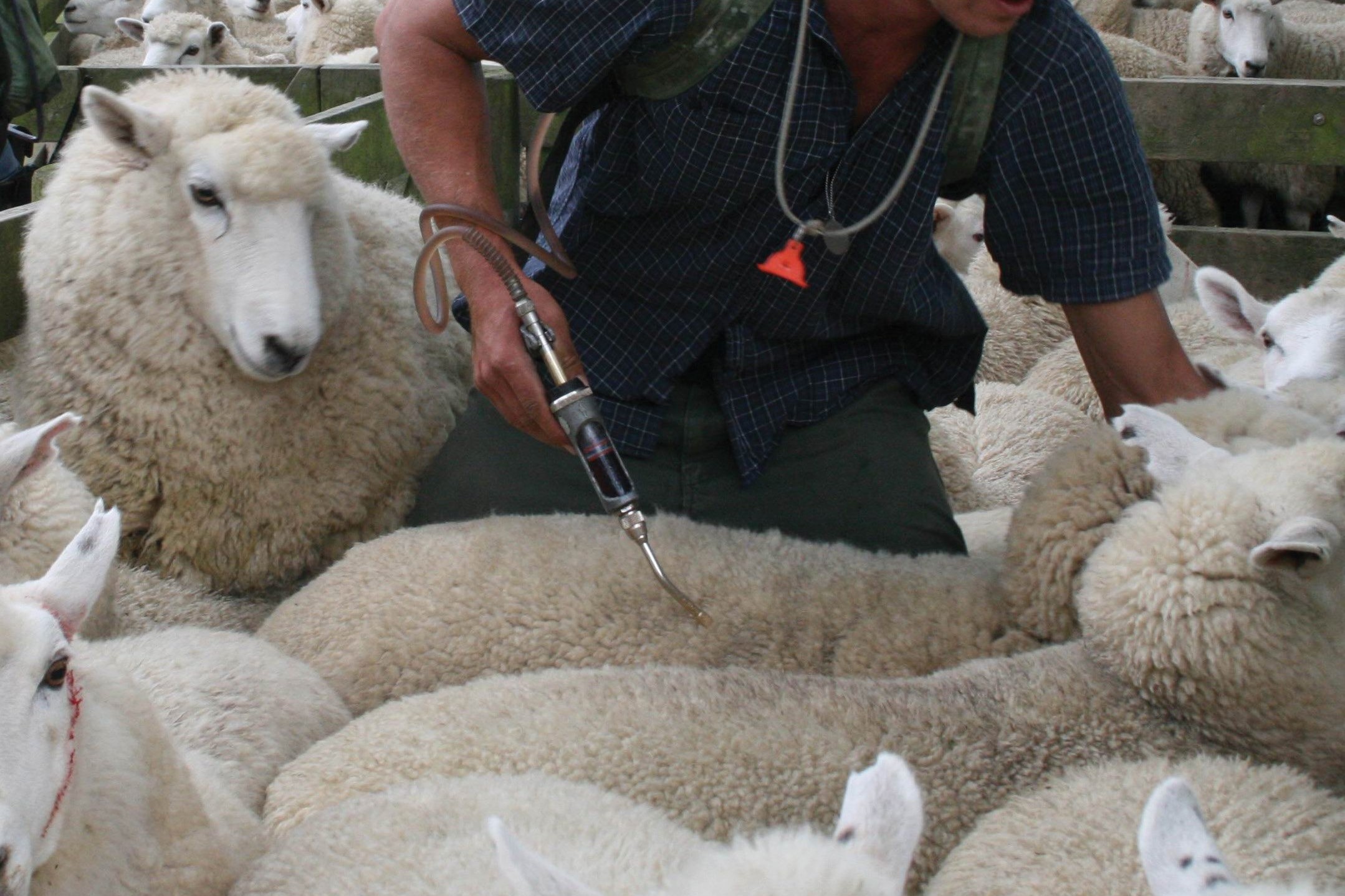Breeding out the cost
For too long, opportunities to breed out the cost have largely been ignored in ram selection, Mark Ferguson writes.

Almost all of the variable costs on a sheep and beef farm have some degree of genetic influence. Whether it’s the genetics of the pastures used or the genetics of the animals grazed, those four amino acids that are the building blocks of life are playing their part.
There is a significant opportunity to exploit this variation and, in doing so, reduce the costs of running livestock.
The current perfect storm of labour shortages, failing chemicals, increasing farm costs, rising interest rates and lacklustre markets means a revamp of outdated ram selection policies is well and truly due. With the ram-buying season fast approaching, it is worth considering exactly what this revamped selection policy might look like.
For decades, ram buyers have focused on traits that make them more money. Litter size and lamb growth rate are a couple of obvious examples.
The reality is there are just as many opportunities to select rams that possess traits to save money and save time as there are to increase productivity. For too long, these opportunities to breed out the cost have largely been ignored.
Internal parasites
Whether it is the time involved in drenching, the cost of treatments, the subclinical loss of production or the severe impacts of outbreaks, internal parasites cause sheep farmers plenty of grief.
For most of our living memory, we’ve had effective treatments available, which have limited the overall impact internal parasites have had on our ability to effectively run sheep. Short-acting drenches, injections and long-acting capsules have combined to enable sheep farming intensification, while maintaining control of internal parasites. Even though this has been expensive in terms of labour and, in some cases, the chemicals used, it has been possible and enabled sheep farming to be profitable.
Since the first drenches were invented, however, there has been a race between the development of new active chemicals and the ability of the parasites to evolve to be resistant to the old chemicals.
Drench combinations have bought us some time, while better management of active chemicals with practices like refugia and inter-grazing with cattle have also helped to keep our drenches effective. But it feels we are now losing that race.
Many farmers are starting to discover resistance to triple combination drenches, leaving only the more expensive, newer chemicals available for use. As these new compounds come off patent, the price will reduce, resulting in broadscale use and rapidly rising resistance to these compounds as well. We will then be heavily reliant on the animal health companies to release a new active. I am not aware of any imminent releases.
In addition to rapidly rising chemical resistance, we also are grappling with the removal of capsules from the market.
This tool has been somewhat of a saviour for many in the industry, helping to effectively deal with worms over lambing when the periparturient loss of immunity in ewes combines with ideal conditions for worms and an inability to yard animals to provide short-acting worm control.
Breeding resistant sheep
An integrated approach to worm management is the only way forward. Under this approach, grazing management, protection of chemicals (through activities like refugia) and breeding sheep that resist a worm infection combine with careful chemical choice to provide a holistic solution.
While breeding resistance to worms is a longer-term solution, it will be a cornerstone of an effective long-term solution to worms and it is time to start now. Fortunately, many scientists and sheep breeders predicted a future like the one we are currently in. They started breeding programmes and systems decades ago; we now have resistant sheep and effective tools to discover new ones.
The two tools that you have available to help you select worm-resistant rams this year are the FEC eBV and the CarLA eBV. Different breeders may provide either one of these and some may even provide both. They are based on different measures: CarLA eBVs are based on antibodies detected in the saliva of an animal and are used by the animal to attack ingested worm larvae; FEC eBVs are based on the faecal worm egg count on the individual sheep.
Both of these eBVs have been shown to be effective at helping you breed sheep that are resistant to worm infections and are reasonably highly correlated. Because the two eBVs are based on very different aspects, the way you use them is very different. If looking at CarLA eBVs, you are looking for larger numbers – the higher the number, the greater the antibody production and the greater the ability to neutralise worm larvae. However, when looking at FEC eBVs, you are looking for more negative numbers, because it is a measure of eggs being produced and you want this to be lower.
Talk to your ram breeder, the team at neXtgen Agri or to Beef + Lamb NZ Genetics if you need help deciphering the information. If your ram breeder doesn’t supply either eBV, you should be encouraging them to do so. Your ability to farm sheep into the future is highly reliant on sheep that are resistant to worms. If a breeder hasn’t generated one of these breeding values for their stud sheep, they have no ability to make genetic gain in that trait. There is no time to waste.
Dag and breech strike
Where there are dags, there is work. Whether you are removing dags pre-shearing to protect the wool clip on fine wool places, removing them pre-slaughter to meet the requirements of the works or removing them to reduce the risk of flystrike, it is all hard and unpleasant work. For whatever reason, we seem to have accepted dags as an inevitable part of sheep farming; but we know that genetic variation in dagginess exists.
In fact, dagginess is 30% heritable and isn’t correlated with much, so there is plenty of opportunity to breed animals that have fewer or no dags. It is time to start utilising that genetic variation to reduce the need for crutching.
Again, we are fortunate that scientists and breeders have done the hard work already and there is an effective eBV available for dag. Ask your breeder for this information when you are having the ram-buying discussion this year. The lower the number, the better.
Culling ewe lambs that are excessively daggy is also a good strategy to speed up your progress towards fewer dags on your farm. Once you start looking, you will see some have a lot more dags than others. This should be one of the reasons ewes get downgraded to the B mob or culled altogether. You should deploy the same strategy for flystrike itself.
While dag is one of the drivers of flystrike, it isn’t the only one. Any ewe that gets flyblown, regardless of the reason, should be destined for the B mob. While there is not an eBV for flystrike, we can put pressure on the trait through culling ewes that get it and asking our ram breeders to do likewise.
Bare area around the breech is another trait you can work on, helping to reduce the incidence of breech strike and making crutching easier. There is a breeding value, BBREECH, which can be used effectively to select rams with a genetically barer breech area. You can also deploy this trait within ewe selection through favouring the selection of ewes with a greater bare area.
Have a plan
Now is the time to make a plan for how you want your sheep to look and perform in 10 years’ time. Genetics is slow, but it is cumulative and powerful, so don’t just select sheep the way you always have. Sit down and plan for what you want to change and the actions you will take to achieve the change.
Once you have the plan sorted, get in touch with your ram breeders and talk to them about the traits you are interested in. There are other labour-saving traits I haven’t mentioned here, like foot health and ewe body condition score.
Genetics is an important part of your overall strategy to optimise your farming system. You owe it to yourself and future generations to make sure you are making the most rapid genetic gain you can.
- Dr Mark Ferguson is chief executive and lead consultant at neXtgen Agri International.




